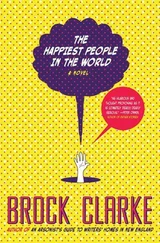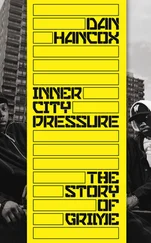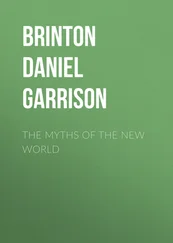In the back corner was a flip-chart covered with semi-legible multi-coloured marker pen scribbles, bullet points and wonky arrows; this, it emerged, was the town’s budget – that same flip-chart is used when the village is debating its spending and resources at the regular, relatively popular general assemblies. The atmosphere was both dignified and beguilingly amateurish – it felt like what might happen if I suddenly had to run an entire community of 2,700 people. There was a ceiling tile missing, which, living in a world where politicians happily spend £650,000 of public money on their wallpaper, was also rather endearing. We sat on fake leather chairs around a cheap wooden table, rather than facing the desk, which was way too messy for the task at hand. It felt like that was where most of the work got done anyway.
The mayor’s zip-up sports jacket had what looked like a small toothpaste stain on the shoulder – the colours were Venezuelan, bold chevrons of red, blue and yellow. It was a homage to Hugo Chávez, who just the day before was on Spanish TV, denying the seriousness of the cancer that would eventually kill him. Sánchez Gordillo had bracelets in blue, green, white, and brown leather on his right wrist, and a solitary red bracelet on the left; it was odd to see a look commonly sported by fifteen-year-old girls in Camden Market carried off by a swarthy Spaniard in his early sixties. His salt-and-pepper hair was well trimmed, while his beard was a more unruly socialist mess, the kind of beard a Latin American people’s hero would be proud of, and that didn’t feel like an accident. It was only when he smiled – which he did more and more often, once we had warmed into the interview – that his gappy teeth were revealed in all their glory.
He spoke that day with range and passion, for hours, about the struggle he had led the village through, its general assemblies and hunger strikes, its cultural opportunities and collective personality, and the inhumanity of the capitalist world outside, as well as the misery of its crisis. I left feeling inspired, and slightly dazed, by his stamina, his determination, and indeed his ready willingness to talk about politics for most of the afternoon with some stranger from the other side of Europe, when he probably had better things to do. As the Spanish press realised from their very first encounter with him, during the 1980 hunger strike, Sánchez Gordillo is both an authentic force of nature, captivating, charismatic and persuasive, and a canny user of the media to further the aims of the village, and his own projects.
Afterwards we went in search of a drink. In one of the village’s more traditional tapas bars it still felt oddly like the 1970s, decorated sparsely with Blackpool-style comic caricature postcards, and populated by old men quietly nursing their sherries and plates of anchovies. The few children in the bar were drinking Fanta through straws, wearing garish Nike tracksuits like they do everywhere in Spain. But the bar had no signage outside, no branding and no adverts, just a stripy awning.
We popped into the SOC trade union bar, situated in the former town hall, now converted into a social centre, with a large, mural-adorned hall at the back, where the village’s general assemblies take place. Twenty-odd men were quietly gabbing away, half-silhouetted, watching the football with one eye, leaning against the cool green tiled columns with small glasses of beer, tossing their olive stones on the floor. Then as night fell we moved on to Palo Palo, the substantial, peculiarly Wild West—themed bar where most of Marinaleda’s rock concerts take place, drawing in revellers from across Andalusia. Its wide frontage displays a giant guitar, the body of which is shaped like the map of Andalusia. Inside, there are saloon doors and a fake log effect – it’s slightly tacky, but all part of the fun.
Marinaleda is a slender village, comprised of two discrete barrios that bulge outwards from one long main arterial road, Avenida de la Libertad: Marinaleda proper, and Matarredonda – though for political and administrative purposes, it is all one pueblo . There was once about a kilometre of vacant land between the two settlements, but it is slowly being filled in by the casitas , the 350 self-built family homes which constitute one of the village’s greatest achievements: the Andalusian regional government provides the materials, the villagers build the houses themselves, and then pay fifteen euros a month as a ‘mortgage’.
The first time I explored Marinaleda in daylight, it was in blazing January sunshine, and the village was almost eerily quiet – but then of course it was, as everyone was working. We took a turning off the main street, into a residential street named for José Domínguez ‘El Cabrero’ – a legendary Andalusian flamenco singer and friend of Sánchez Gordillo’s. Many of his songs are about the struggles of the Andalusian jornaleros , about the land, about freedom. ‘Ah, so he’s a socialist?’ I asked. ‘No! He’s a communist!’ Javi corrected me, laughing.
El Cabrero wasn’t the only one. When Marinaleda’s first democratic elections in 1979 returned a majority for Sánchez Gordillo’s party, the CUT, or Collective for Workers’ Unity, the town council renamed most of the streets. They named one for Fermín Salvochea, the nineteenth-century anarchist mayor of Cadiz, and one for Blas Infante, the ‘father of Andalucía’, murdered by Francoists for the double crime of being both a regionalist and an anarchist. Plaza de Franco was transformed into Plaza de Salvador Allende, replacing the name of Spain’s fascist dictator with Latin America’s first democratically elected Marxist leader. There are streets named for fraternity and solidarity, for Federico García Lorca, Che Guevara, and Pablo Neruda, as well as for numerous Spanish communist, republican and artistic martyrs, including the poet Antonio Machado. The man who coined the famous phrase ‘the two Spains’, describing the secular, progressive left and the more authoritarian, religious right that would fight Spain’s Civil War, Machado died in 1939, at the end of the conflict, while fleeing the one Spain he wasn’t considered a part of.
If you walk down the wide new boulevard alongside Avenida de la Libertad, you can enjoy an extensive display of well-rendered political murals winding along the white walls. They vary enormously in size, age and quality, but many of them are truly magnificent, and together, they take up a lot of wall space. Andaluces, levantaos (Andalusians, arise!), declaims one, alongside the flags of Andalusia and the Spanish Second Republic. Another says ‘Turn off the TV / turn on your mind’, accompanied by a baby with a TV instead of a head, clutching a euro coin. Slightly less cloying is a painting of the globe, with the seas painted red instead of blue, and a red fist emerging from the north pole, with the robust slogan, ‘Against capital – social war!’.
The most striking mural represents a rather different aesthetic to cuddly pacificism (and the village’s fondness for doves): alongside a ten-foot-high painting of a hooded man with shadowy eyes is a star, and the slogan La libertad no se mendiga – freedom is not begged for. This is a quote from the Cuban revolutionary José Martí, and the second, somewhat more assertive half of the quote is absent from the wall: Se conquista con el filo de un machete – it (freedom) is conquered with the blade of a machete.
Other murals call for agrarian reform, demilitarisation, ‘peace, bread and work’, an end to homophobia, and solidarity either with or from the people of Palestine, Catalunya, the Basque Country, Peru, Vallecas (a working-class district of Madrid) and Colombia – many of them, in fact, were painted by visitors from struggles beyond the village, who came to see what utopia looks like, in the hope they might take a bit of it home with them. The most detailed of the murals depicts the village’s notorious land seizures in the 1980s, where they addressed Andalusian land inequality directly by occupying what they deemed to be theirs. A chain of marinaleños , Marinaledans, march single file towards the fields in the distance, towards their destiny. They look like L. S. Lowry’s figures if they’d been fattened up and bronzed by a Spanish diet and sun.
Читать дальше












